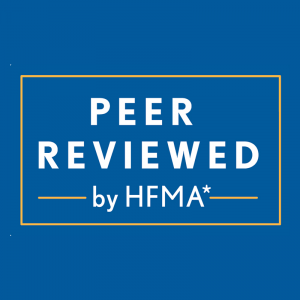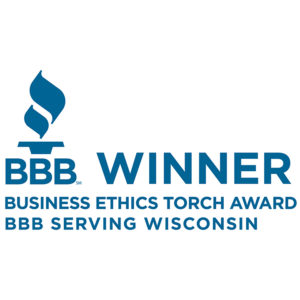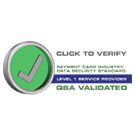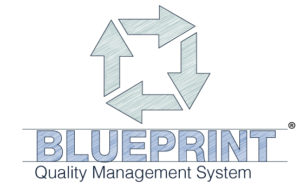We all know that the Consumer Financial Protection Bureau (CFPB) has been clear that it wants all companies it regulates to have some kind of process in place to manage and review complaints from the consumer. While the CFPB isn’t yet authorized to regulate complaints within the healthcare industry, most industry experts agree that it’s just a matter of time before that changes. Accordingly, it’s very important that you consider putting in place a formal complaint system.
Where Do You Start?
Before you can build a complaint management system that works well, you need to determine what you consider to be a complaint and what isn’t. Of course, the CFPB is likely to broadly define complaints. How you choose to define a complaint should be very clear – this ensures that everyone within your organization is on the same page. For instance, some people sometimes call with the attitude that they don’t want to waste their time with first-level support and just expect to talk to a supervisor. Just because the individual asked to speak to a supervisor right away, is it necessarily a complaint? Maybe not, but that will depend on how you choose to classify calls like that.
In addition to defining a proper complaint, you will want to determine your definition of a dispute. Often, disputes can be easily and quickly resolved, but your staff should know how you, as an organization, have defined disputes. A dispute might include an escalated call to a supervisor, a verbal or written stall or objection, or a dispute with a consumer reporting agency. What constitutes a “dispute” might differ from one healthcare provider to another, so it is very important that employees understand how it is defined.
Access points for complaints to reach your organization must also be thoroughly identified. Complaints may come to you in various ways – phone, email, web, attorney. Missing even just one access point can cause complaints to be missed and inadvertently ignored. Your organization may find it helpful to designate one specific location where patients can submit complaints. That information can be published on statements, posted in your facilities, or easily found on your website. But no matter what access points you make available for consumers, be sure to have processes and procedures in place for capturing all potential complaints from every possible access point.
What Should You Track?
Once you’ve formally defined a complaint, it becomes important to create categories for any complaints received. Categories could include the scheduling and registration processes to the billing procedures, misapplied payments, or the patient’s experience speaking with a customer service representative. After creating the appropriate categories for how a complaint was generated, you can begin tracking them to determine which areas need the greatest improvement.
When it comes to actual complaints, each one should be categorized by how it was generated. This helps track each complaint in the category it belongs. Complaints can be generated from processes prior to account placement, the placement process itself, lettering, misapplied payments, the experience of talking with a collector or several other issues. Tracking each complaint with categories helps you understand what areas need the most improvement.
How Do You Track?
In addition to categorizing the complaint approximately, you should also give it a status that allows you to track its progress toward resolution; such status tracking also allows others within your organization to understand what is being done to solve the program. Examples of statuses include whether the complaint is new, whether contact has been initiated with the consumer, if further information is being gathered, or whether follow up in required with the consumer. Many times, the complaints we receive can be alleviated by simply telling a patient you’ll get back to them. But, too often, we just don’t say anything to the individual – they ask for information and we simply do not give it to them. Imagine how many complaints could be avoided if we were to provide patients with the information they need in a timely manner.
Establishing various statuses for each stage can help you pinpoint exactly where a complaint is in its life cycle. Having that information readily available is extremely valuable, whether for your own internal measurements or for a visit from a regulatory body. Specifically considering the CFPB, not only do they want to know where the complaints are coming from, but also what is causing them to occur. By having a strong tracking system in place that allows you know exactly what is happening at any given time, you can show that your organization is working hard to not only eliminate complaints, but also help the patient.
Why Complaints Occur
So now you’ve established what you’re going to track and how you’re going to track it. In addition to the “what” and the “how”, we must consider the “why”. Spending some time understanding the root cause of a patient’s concern and addressing that specific cause helps prevents the same issues from occurring again and again, thereby minimizing further complaints. You’ll spend far less time analyzing the cause of concern than you will managing recurring complaints – that will help your bottom line in the long run.
Reaching Your Goal
The goal of a complaint management system is to have the consumer come to you before they go to a regulatory body. You need to make sure you give the consumer a chance to allow you to resolve the concern. The key to effective complaint management is training staff to be comfortable with whatever processes you put in place. By training employees to see an issue from the patient’s point of view allows them to be sympathetic to the patient’s needs. At the end of it all, the complaint management process you put in place should create a win/win situation for all involved – the patient has their concern resolved quickly and completely while your organization has the opportunity to correct a problem that you may never have known about otherwise. And by resolving the issue directly with the patient, you’ve avoided the interference of any outside agencies – an added bonus.
But in all of the effort you spend to track complaints, don’t forget to track those compliments too. While the CFPB may not come asking about any compliments you’ve received from patients, the positive effects of compliments on staff can go a long way in boosting morale. Don’t allow too much emphasis on the negative overshadow all of the positives that are coming out of your organization.
About State Collection Service, Inc.
Since 1949, State Collection Service has provided quality collection service to countless healthcare organizations.
Through experience and innovation, State Collection Service has grown to become a tremendously credible and nationally-recognized collection agency offering services from pre-registration to bad debt. It is upon the basis of ethical behavior and a dedication to integrity that each State Collection Service employee works to uphold the company’s vision – Partnerships for a Lifetime.
*This article first appeared in “A State Collection Service, Inc. Newsletter Volume 20, Issue 3, Third Quarter 2014”















